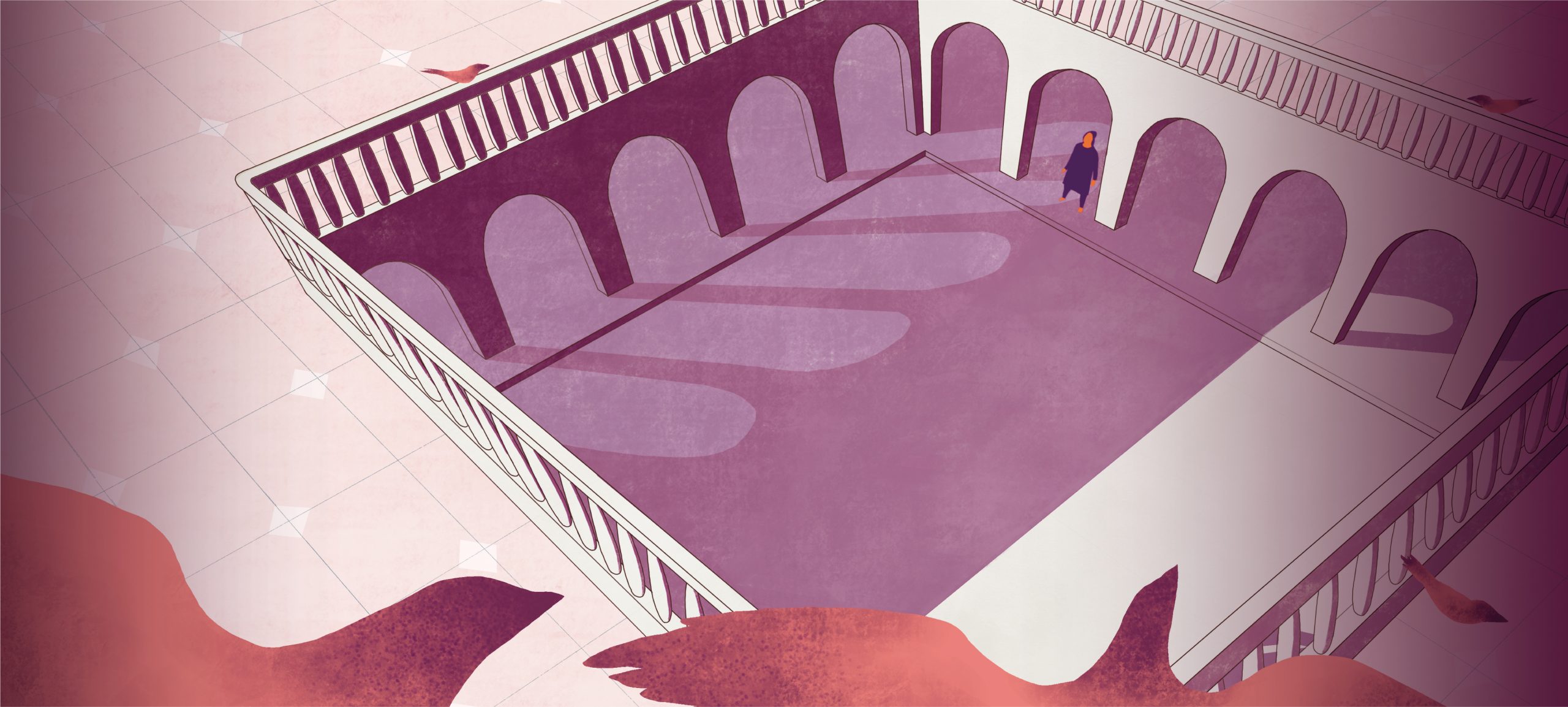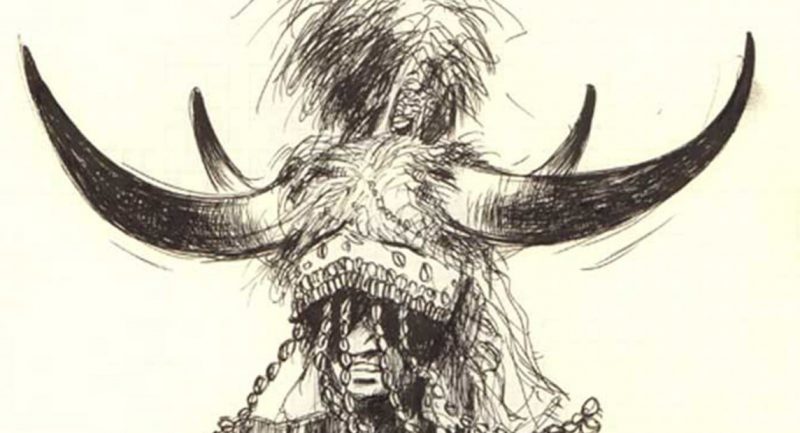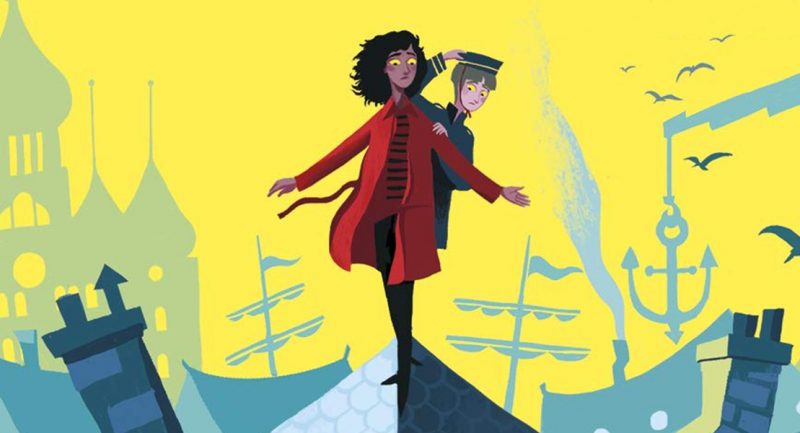
In Khadija Mastur’s The Women’s Courtyard, Aliya lives a life confined to the inner courtyard of her home with her older sister and irritable mother, while the men of the family throw themselves into the political movements of the day. She is tormented by the petty squabbles of the household and dreams of educating herself and venturing into the wider world.
But Aliya must endure many trials before she achieves her goals, though at what personal cost?
Here is an excerpt from the afterword of the book by translator Daisy Rockwell, titled The Brontë Sisters of Urdu Literature.
Khadija Mastur and her sister, Hajira Masroor, have been called the Brontë sisters of Urdu literature. This comparison seems to have been made primarily on a biographical basis— they’d led tragic lives, were meek and unassuming in person, but wrote with conviction. But from a feminist perspective, the comparison is quite apt. Khadija Mastur wrote two novels and five collections of short stories in her fifty-five years, and it is a rare story that does not contain a critique of patriarchy, chauvinism and misogyny. Happy endings are few and far between.
Though the Brontës’ books are often described as romances, they too took a bleak view of male behaviour. The Brontës sometimes came up with a ‘happy’ ending, though it often feels tacked on, for the sake of the formula. ‘Reader, I married him’—Charlotte Brontë’s famous last line in Jane Eyre cannot be seen as a truly happy ending to the brutal tale. After all, our romantic hero is by now old, blind, disabled and semi-homeless. Mr Rochester, as has been explored in countless retellings and analyses, is not a very nice man: one who locked up his mentally ill Creole first wife in the attic, and then lied about her very existence. It is only when Mr Rochester is tragically maimed and reduced in the eyes of society that Jane Eyre can hope for a relationship built on trust and mutual respect. In fact, throughout their works, it is clear that the Brontës did not have a high opinion of male motivations and behaviour—as with Anne Brontë’s description of married life in The Tenant of Wildfell Hall, in which even the supposedly positive character of the male narrator often behaves poorly himself; or the unappealing and disappointing male love interests in Charlotte Brontë’s Villette.
Unlike the Brontës, Mastur and Masroor came of age writing at a time when there was a strong progressive writers’ movement. Though they could have chosen to write romances, they were politically engaged, Mastur for a time serving as the head of the Pakistani Progressive Writers’ Association. Because of her political views, shaped in part by a youth marked by poverty and deprivation, Mastur felt no obligation to deliver happy endings to her readers. It is clear from her writings that she saw patriarchy and classism as systemic poisons that destroy and kill women intellectually, emotionally and physically.
Not that Mastur treated her female characters with unstinting kindness either. Far from it. In characters such as Aliya’s mother and grandmother in The Women’s Courtyard, Mastur paints a detailed and unforgiving portrait of the role that women play in perpetuating the rigid bonds of patriarchy and class hierarchy. Indeed, Aliya’s mother and grandmother play active roles in destroying the lives of those who dare step outside the boundaries of tradition. The behaviour of these women is so brutal at times that they end up looking far worse than the actual patriarchs in the family, whom Aliya regards with love and respect despite their neglect of their families in favour of outside political involvement. Aliya’s mother is by far the most toxic character in the novel; she makes it clear that she considers her mother-in-law a flawed role model, one who ruined the family by failing to poison her own daughter when she was discovered in a romantic liaison with a lowerclass man.
Aliya herself wonders what it is that makes her so forgiving of her father’s and uncle’s neglect of their families’ welfare:
How she wished that Amma hadn’t driven anyone from the house; it was Safdar who had divided everyone, and then Abba was so busy with his animosity towards the English that he wouldn’t even turn and look at anyone. He didn’t even acknowledge her love. But she couldn’t say any of this out loud. She herself wondered why, despite Abba’s indifference, she still loved him the most. Abba’s affectionate eyes were so expressive. She’d never been able to say even one word against him (see p. 77).
Aliya sees her father and uncle as brilliant, politically principled men, even as their families are slowly wiped out financially and emotionally by their failure to step into their roles as patriarchs. But Aliya’s love is an intrinsic part of patriarchy as well—she has infinite forgiveness for her male elders, but little sympathy for the shrewish women who work desperately to keep the family and class structure in place.
Still, Aliya knows that the worst thing she can do to perpetuate the system is to step into the role awaiting her as a wife—specifically as wife to her cousin Jameel. Despite her suppressed love for Jameel, and a certain physical attraction to him, she sees capitulation to his advances as a sure way to end up just like her mother and aunt: a whinging housewife with a neglectful and politically active husband. The only way she can see clear to break the cycle is by refusing to marry. Implicit in this choice is the belief that marriage is a tool to perpetuate the system of patriarchy, a notion that is still radical more than fifty years after the publication of the novel.
The Women’s Courtyard cleverly brings into focus the claustrophobic lives of women whose entire existence was circumscribed by the four walls of their homes, and for whom the outside world remained an inaccessible dream. For more posts like this, follow Penguin India on Facebook!









